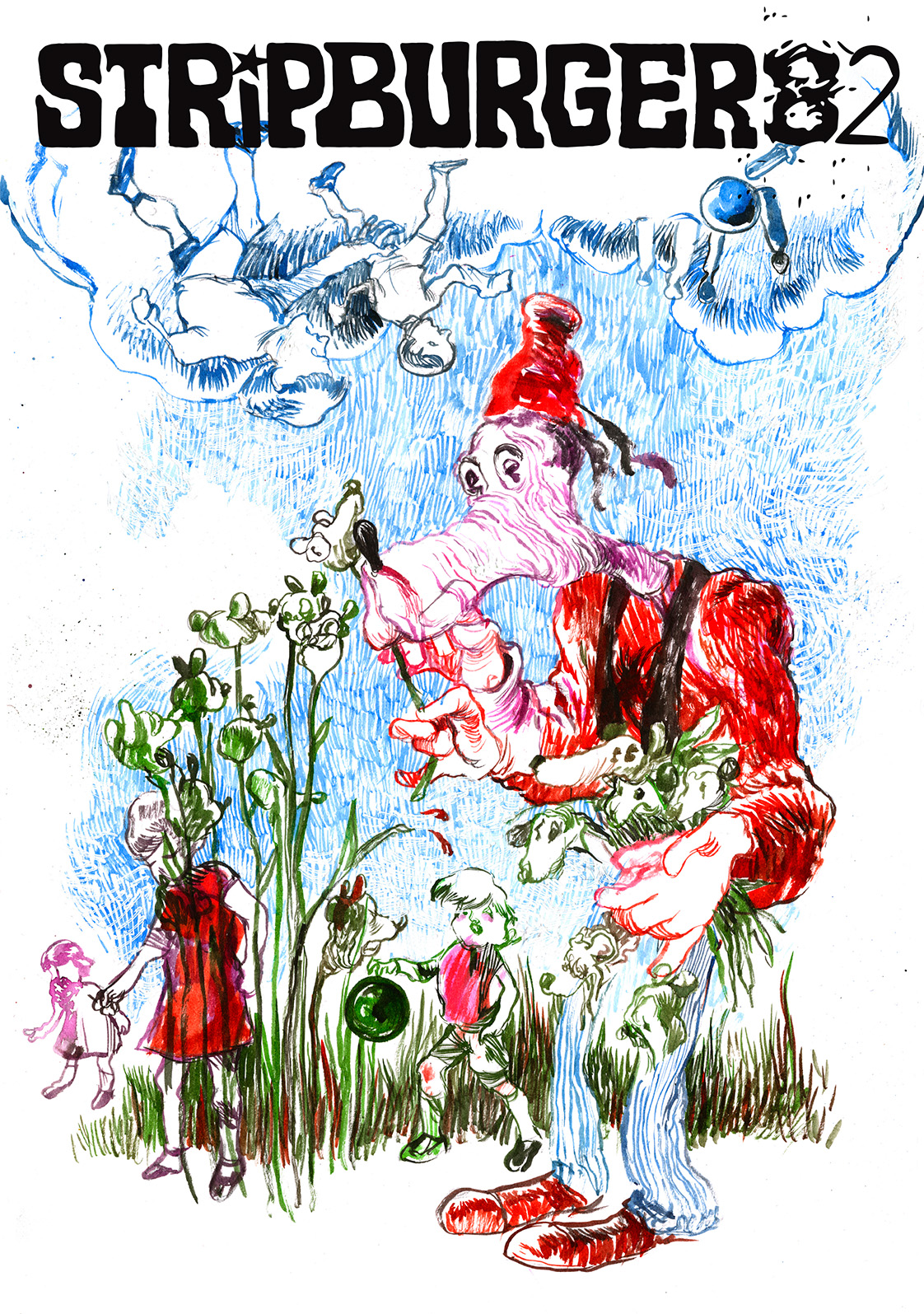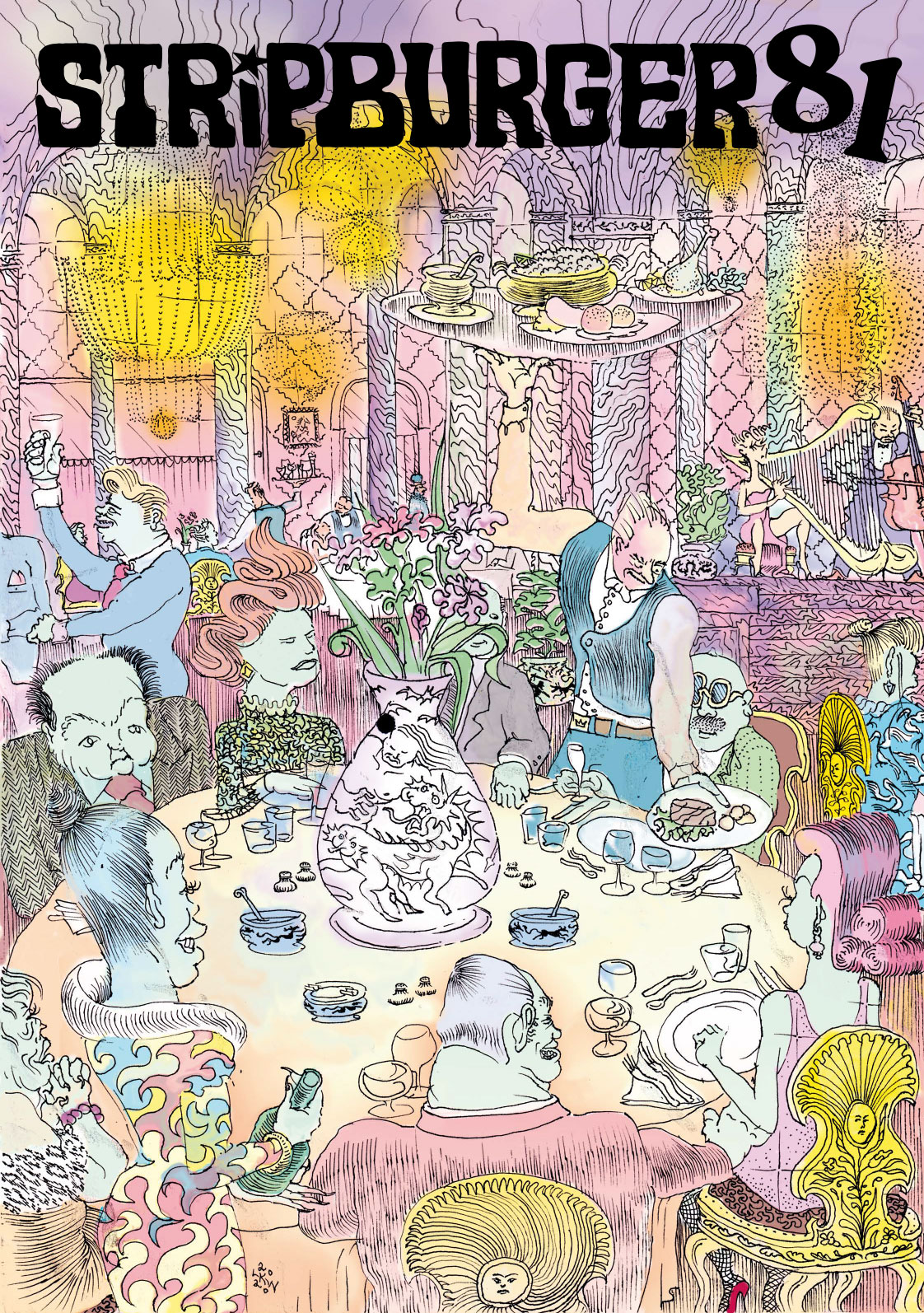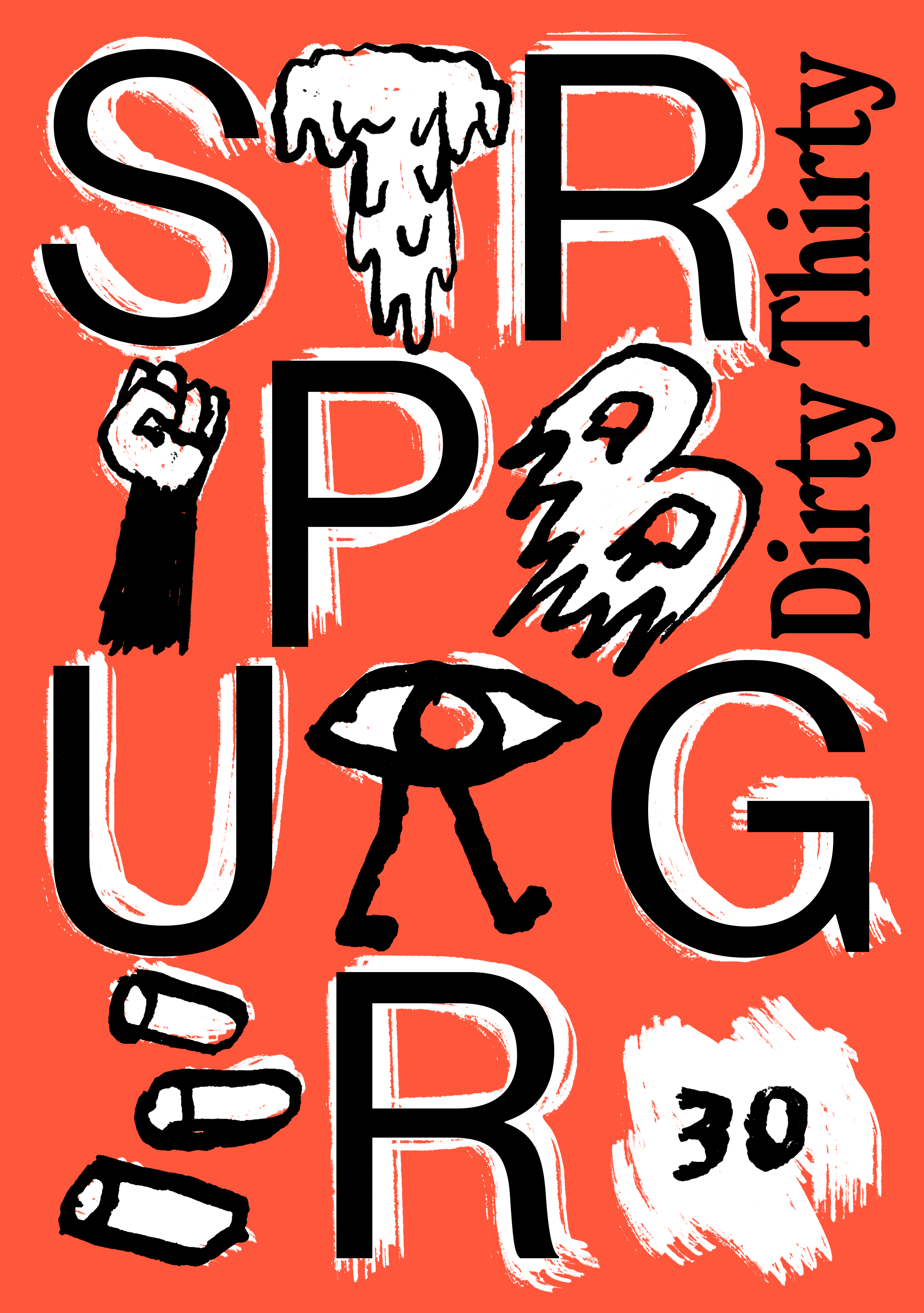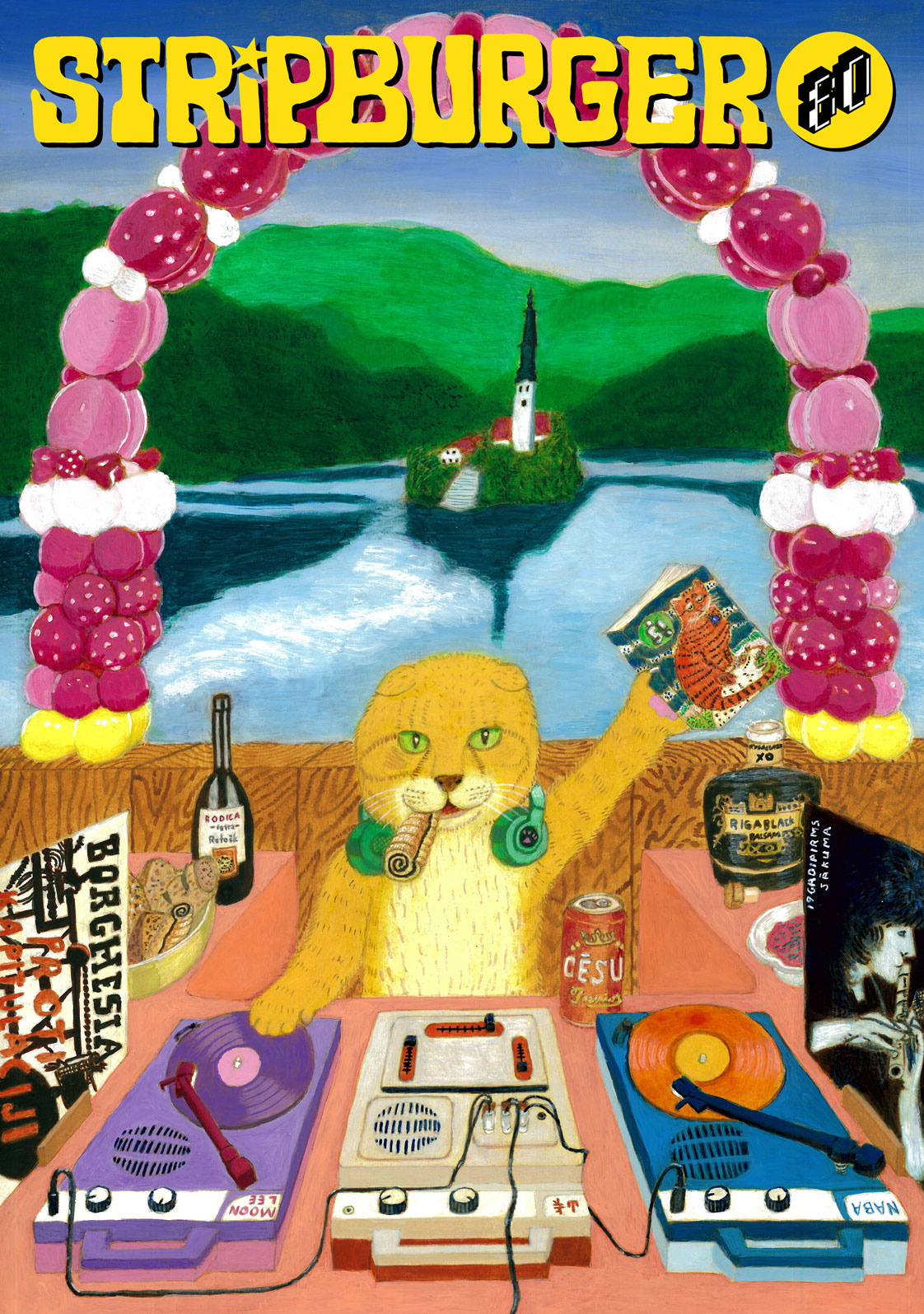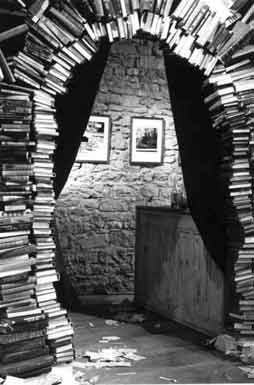
Lionel Tran, writer and comic screenwriter, Ambre, comic artist and Valérie Berge, a photographer. These are the main authors of the TerreNoire publishing house, based in Lyon, France. The main genres of their publications are litterature, comics and photography. But they are never rigoously limited to only one of these mentionned genres; the group loves to experiment, that is why the borders between different art fields are often blurry. A case in point is the comic album Too Loud A Solitude, made after a novel by Bohumil Hrabal in wich the three artists have joined forces. The exhibition of the above mentionned comic (also hosted by us in September) was supplemented by an installation that proves the group never hesitates to expand his artistic activities to new fields. We interviewed Mr Tran and Lucas Méthé, the youngest member of the group. (By the way, Lucas’s first comic album was published this year by Ego comme X publishing house. A review can be found in the issue 41 of Stripburger as well as one of the comics by Ambre and Tran).
How would you describe, in a few words, the aims of the TerreNoire to someone who is not yet familiar with it?
Lucas Méthé : TerreNoire is a little structure of edition that was created in 1997 by three people, each of them working in their own medium, wich means that from the beginning there was no problem with publishing books of photography next to comic strips, for example. At this time it was more a matter ot self-edition, but still there was a strong connivence between all the books, the same feeling was in each of them.
Now TerreNoire is evoluting, for one year now we have invited other people to make books with us. The feeling of sadness that was really strong in the first books is also changing with ourselves, now it is more a matter of nervousness, angryness, wich is a good thing to make us work a lot. But the way we work is still very “poor”, we do all the work for each books, including the gluing, the selling, the distribution etc.
It is the same thing for the exhibition Too Loud A Solitude, wich deals with an adaptation in comics of a novel by Bohumil Hrabal. All the exhibition was made by people that knew nothing about exhibitions. So we always have to learn new things, new ways of working, so that we can continue to show our work despite the lack of money.
Ambre and Lucas Méthé are comics artists, Valerie Berge a photographer, Lionel Tran is a writer…What is, in your opinion, a common point of these artistic practices?
L.M. : At the beginning there is a sensibility wich is near , we try to express the same feelings and we work on expressing this feeling in these different practices.
Lionel Tran : Before creating TerreNoire, the three of us were working and nearly living together in an underground collective from La Croix Rousse in Lyon (France), mainely doing oil painting. What we had in common in those days were the books we read, the music we listend to and the artists we enjoyed the works. Everybody was working quiet hard in this collective, so more than anything we share a common artistic background. When this collective split off in 1997 because of hard drugs problems, Ambre Valérie and I decided to create TerreNoire, in order to publish our own books. We are used to each other’s work for so many years that is seems obious to sometime work together on a project.
For me what we have in common is an artistic sensibility. Our respective medias also share a deep interest for images, especially my “nouveau roman” style of writting. Ambre and I, and now Lucas, are deeply attracted to photography. Before becomming a photographer, Valérie had a strong desire to drawn. And all of this drives us to commit sometimes very unusual graphic novels.
How does collaborating between creators from different artistic fields influence each other’s work?
L.M. : In the “Too Loud A Solitude” the influence is particularly obvious…
L.T. : On the comics adaptation I did a script adaptation, then Valérie used this script and the feeling she had after reading the original novel to do a complexe work of photography. Her aim was to try to capture the feelings and the toughts of Hanta, the book’s narrator. Then the first move of Ambre was to do a montage work with my words and her pictures. After that he made bad photocopies of Valérie’s pictures, which are fine hand made photography prints. Then he redraw everything, trying to “repare” the images he had destroyed. This strange way of working together on this particular project has lead us to do something we wouldn’t have done alone. The work on the exhibition involved more creator from different fields : 3D conception, installation, movie making, sound and ligth design…
Many people in the comics or edition field are surprised by this way of working together on a strong artistic project, as if it was something completely new. Many art field are collective fields : movie making, theatre, street theatre, performance… If a project is clear and strong, it is more easy and pleasant to share as many possible energy on it.
More than direct influences from the respective artistic fields, I think it is the specifications of the projects that will lead each artist to research new ways of doing is work. Maybe it is why we work so slowly : a comics projet represents at least 3 years of work, and more of research. Each time we chose to work on a new comics projet we try to do something completelly different. On the last few year we are speaking a lot at TerreNoire about sociology and politics. It helps to define a new comics project I have with Ambre, and at the same time all these discutions, readings have lead TerreNoire to publish a cheap policial collection named “No present – books handmade by unemployed people” …
L.M. : Another influence that is particularly important is the way of working: working together, working as an editor on other people’s work make you perceive your own work differently: we try to be more efficient, to concentrate on what is really essential in each of our works.
It seems that in your publications the traditional boundaries between comics, literature and photography are blurred. Do you think this is just an interesting experiment? Or do you think this is a trend in all forms of art that will only gain importance in the future?
L.T. : We don’t think of it as an experiment. Often people are suprised toward our books, throught the last 8 years we have heard a lot of stupid questions like : “why photography and comics ?”. Hey, what’s wrong there ? Can’t you like movies AND novels ? Now it starts to slow down : when we present our books on a festival, many people go to one book to another naturaly, the problem is not why “this and this”, but “do the books interest you”…
Publishing different kind of books happened to us from the begining. With the exhibition “Too loud a solitude” it is the first time we express this “mutlimedia” approch so clearly. All of us read comics books, manga, novels from writters from many countries, history books, essays, we listen to all kind of music, look at every type of movies, why in our art practise should we put walls between art fields : Comics/Movies/Music/Traditional arts/ Modern Arts/ Litterature/ Litterature for children/ Genre Litterature/Genre Litterature for Children/ Genre litterature for chrildren of parents who doen’t like genre litterature…
The comics from TerreNoire are very different from traditional ones. How are they accepted by the more conservative comics readers?
L.M. : In France there are quite a lot of alternative editors, and now quite a lot of traditional editors wich make their alternative collections… so there is quite an audience for this kind of comics, but these are not really the people we can touch with what we do: because even these editors, for the most, propose comics that are quite classical, in a way, with classical comics codes wich refer to the french and belgium comics history. The readers of these comics are not great fans of our work because we come from a culture based on litterature and photo, as you can see in our other books.
With Too Loud A Solitude, we have seen that the people who were interested, often were not readers of comics at all. Anyway, we make so few copies of each of our books that we can think we will manage to sell them, and they are weird enough to really interest mostly few people that will buy them.
L.T. : We really are outsiders, as comics authors and as small publishers. The bad point is : you always have to fight for anything you do. The good point is : you learn how to fight and it lead you to do things as few people would dare to do. We have nearly nothing so we have nothing to lose, we can take any risks. Somethimes it leads to good surprises. Most of the time you’d better not be affraid to work hard. It is always a matter of survival, and using of guerrilla technics…
When the TerreNoire was started, did you know that someday your activities will also include making instalations like the one for “Too loud a solitude”?
L.M. : No, this exhibition was made because of the lack of interest we could see when doing normal or tiny exhibitions, just putting photography on the walls, for example. It’s difficult to get people interested to your work, and even more when you deal with subjects that are not easy, obvious, like the ones we deal with. If we don’t do such exhibitions as this one, who could know we are even existing ?
Then after there have been a great work to conceive this instalation, and to adapt it to each place we are coming to. It has become an aim in itself.
I have to admit that I find some of the TerreNoire publications a bit puzzling… “Cahier du Vietnam” for example, is an exact reproduction of your hand-written diary, which makes it rather difficult to read. How are we supposed to use such a book?
L.M. : Of course, you have to read french to get in this book. We don’t like that much the “books-objects” that you don’t even read, so when we make a book with text inside, it is to be read.
For this one, -and a few others- , we get a diary already written by somebody, not in purpose to be published; something wich have an interrest in the writting, of course, maybe as a testimony or for this book, as a learning of litterature writting. Cahier Du VietNam is handly-written, and very tiny-written, but readable; the author went for three months in VietNam for a travell, and the diary deals with the impossibility to confrontate with another country wich is really poor; so you can see the narrator and his girlfriend afraid to go out of their hostel room and writting all day… their is a performance aspect in this book, but the interest is to read it and to read it hand-written. It would lose a lot of the interest if it was typed. Of course it is not easy to read, but you have to read it this way. And it will really be a strong reading experiment.
L.T. : On the same approch we have published “Carnet” by Benjamin Monti, which is a carnet hold by a 17 years old guy for 3 months. It looks like an art book from the asylum… It is very strong and strange, when you get it you think : weird stuff, it is impossilbe to read. But after the first page, you are completely stuck in this awfull book. Publishing such thing is nonsence, because it will interes so few people. But we like those books, as readers, we find the strong. It is not easy artwork, done to have fun or to pretend being an artist. These are books with guts, that were painfull to make and that are painfull to read. When librians discover “Cahier du vietnam”, they are asthonishe : . “what the fuck is this ?” What the fuck should underground books be ? For me : books that puzzle you, books that make you laugh because you don’t know how to handle them, books that scares the shit out of you and make you thing : at any cost I would not dare to meet the person behind this… Also books that are so different from what you seen that sometimes you’ll feel in love with them and spend time to understand what strong human experiement they came from.
Finnaly… What can you tell us about your future projects?
L.M : There are a lot of other books on wich we are already working, there will problably be like 5 or 6 more in the next four months… We are going to develop the political collection we have created, and make work the people we have already been publishing, trying to keep an energy in the way make things… Some new projects are ready to begin, like a serie of short movies based on a collection of books we made, and dealing with the difficulty of people living in underground artistic movements, the “collection Losers”…
Concerning Too Loud A Solitude, we hope a translation in slovenian and in english will be possible, maybe exibitions in other places, too.
L.T. : It is now nearly 15 years that Ambre, Valérie and I have a workshop in Lyon, 10 rue du Chariot d’Or, the underground collective we were part of was there, it shortly became a galery, after it was used by heroine addicts, then it was closed for a few years and the exhibition’s installations where constructed there. Now we are working there nearly fulltime, last year we started to collect machines to make books. The place is changing a lot, quickly, we want as much energy to circulate there. This will means surelly making dozens of books in the few years to come, probalby inviting authors to create and exhibition and a book at the same time, maybe building another big exhibition, filming animation movies there…
How would you comment the position of alternative artists (like you are) in France? Is there a lot of interest for your work?
L.M. : Like we said we can be considered as outsiders even in the alternative french scene, there are not so many people that even know about our name…
Anyway, even the other alternative artists in france are not much viewed, 90per cent of them don’t get any money for their work, so they have helps from the governement as unemploeyd people, but this is in way of desapearing… we don’t know how it will evolute, we can think that a lot of alternative editors and artists will have to stop their work in the next years and find a “real work”. But it’s hard to know, because we are such a small structure in comparison of the quite known alternative structures. This is also why we can continue working, we know how to make books with nearly no money.
L.T.: But the reactions we get from our readers are always strong, they like a lot or not at all, wich is rather a good thing. Most of the time we work for free, so we want to do the things like we really want them to be.


